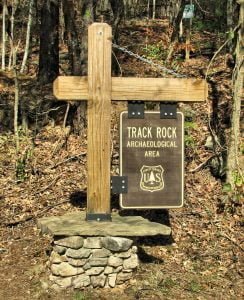A Mysterious Young Lady Named Liube
On one of the six main boulders of the Track Rock petroglyphs near Brasstown Bald Mountain, GA and across Track Rock Gap Road from the Track Rock Terrace Complex, a Jewish girl carved her first name, Liube, and the date, 1715. The drawing of the petroglyphs was prepared by South African archaeologist, Johannes Loubser, as part of a contract with the U.S. Forest Service. The six drawings are published on a public USFS web site. Liube is a Jewish female name that is mostly used in Slavic countries. It means “beloved” and in the past was a name that rabbis liked to … Read more


